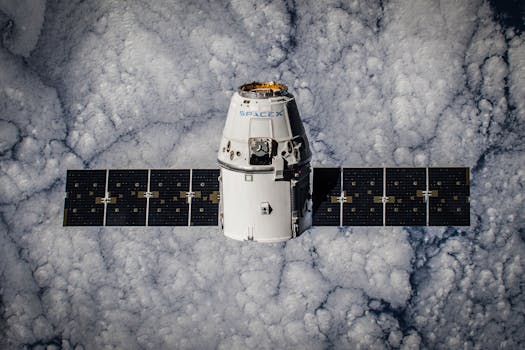Beyond the Atmosphere: The Future of Satellite Technology for Surveillance and Connectivity

Beyond the Atmosphere: The Future of Satellite Technology for Surveillance and Connectivity
Satellite Technology
The future of satellite technology is rapidly evolving, with advancements in surveillance and connectivity capabilities. Satellite technology has been a crucial component of modern society, providing essential services such as navigation, communication, and weather forecasting. However, the capabilities of satellite technology extend far beyond these basic services, with cutting-edge developments in areas such as satellite-based surveillance and connectivity.
One of the primary drivers of innovation in satellite technology is the increasing demand for high-speed, low-latency connectivity. The proliferation of internet-enabled devices and the growing need for seamless communication have created a pressing need for advanced satellite-based connectivity solutions. Companies such as SpaceX, Amazon, and OneWeb are at the forefront of this revolution, launching constellations of satellites designed to provide blanket coverage and high-speed connectivity to remote and underserved areas.
Surveillance and Connectivity
Satellite-based surveillance is another area that is experiencing significant growth and development. With the increasing threat of global terrorism, natural disasters, and climate change, the need for advanced surveillance capabilities has never been more pressing. Satellite-based surveillance systems can provide real-time monitoring and tracking of events, enabling rapid response and mitigation. The use of satellite-based surveillance is not limited to military and government applications; it also has numerous civilian uses, such as monitoring crop health, tracking wildlife migration patterns, and detecting early signs of natural disasters.
The integration of satellite technology with other emerging technologies such as artificial intelligence (AI), the Internet of Things (IoT), and big data analytics is also opening up new possibilities for surveillance and connectivity. For example, AI-powered satellite-based systems can analyze vast amounts of data to detect anomalies and predict potential threats, while IoT-enabled devices can provide real-time monitoring and control of remote assets.
Future Developments
As satellite technology continues to evolve, we can expect to see significant advancements in areas such as quantum computing, advanced materials, and propulsion systems. The development of quantum computing, for example, will enable satellites to process vast amounts of data in real-time, providing unparalleled surveillance and connectivity capabilities.
The use of advanced materials and propulsion systems will also enable the development of more efficient and sustainable satellites, with longer lifespans and reduced environmental impact. Additionally, the integration of satellite technology with other emerging technologies such as 5G, blockchain, and virtual reality will create new opportunities for innovation and growth.
Conclusion
In conclusion, the future of satellite technology is bright, with significant advancements in surveillance and connectivity capabilities. As the demand for high-speed, low-latency connectivity continues to grow, satellite technology will play an increasingly important role in meeting this need. With the integration of emerging technologies such as AI, IoT, and big data analytics, satellite technology will enable new possibilities for surveillance, connectivity, and innovation, transforming the way we live, work, and communicate.